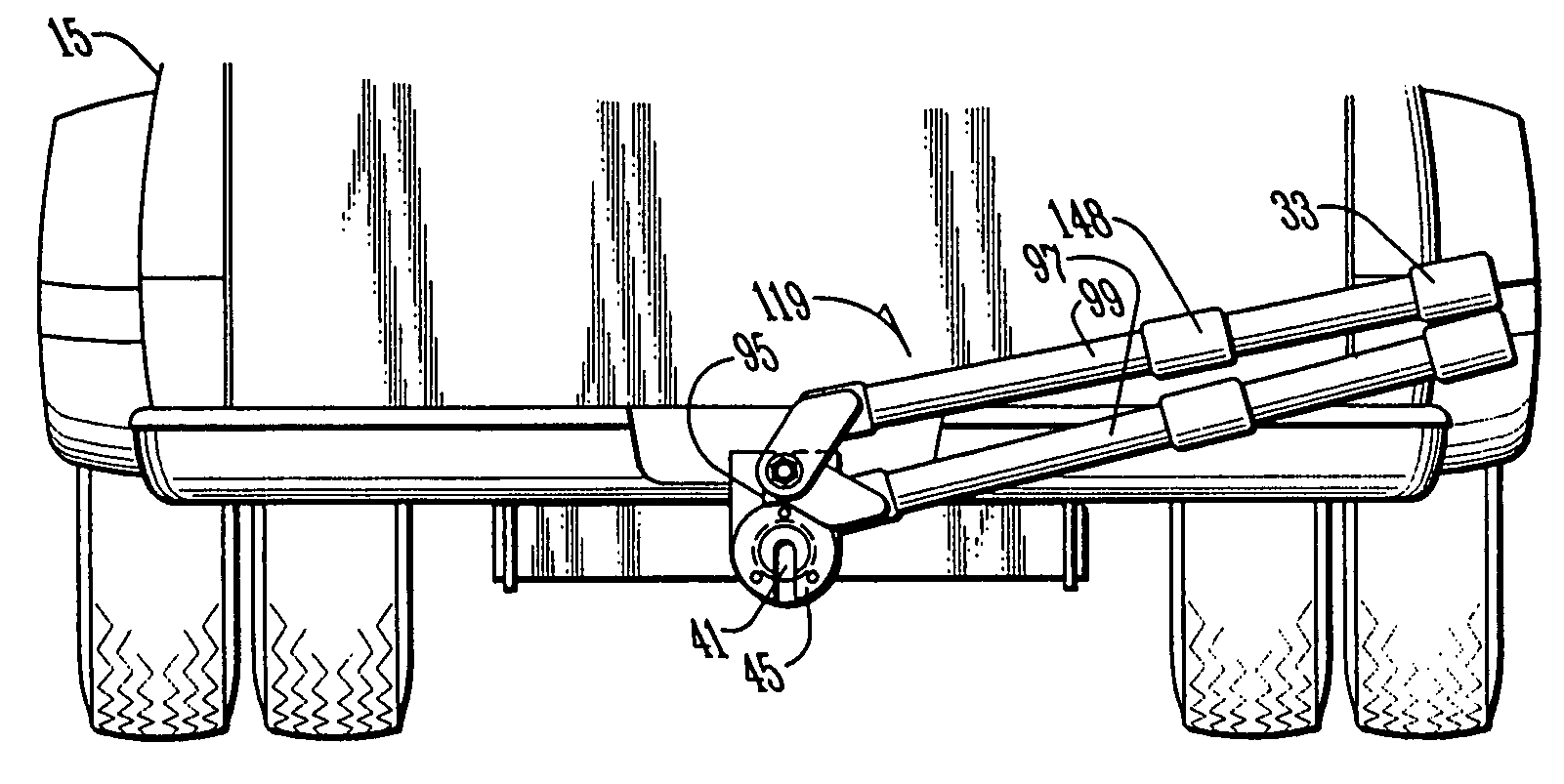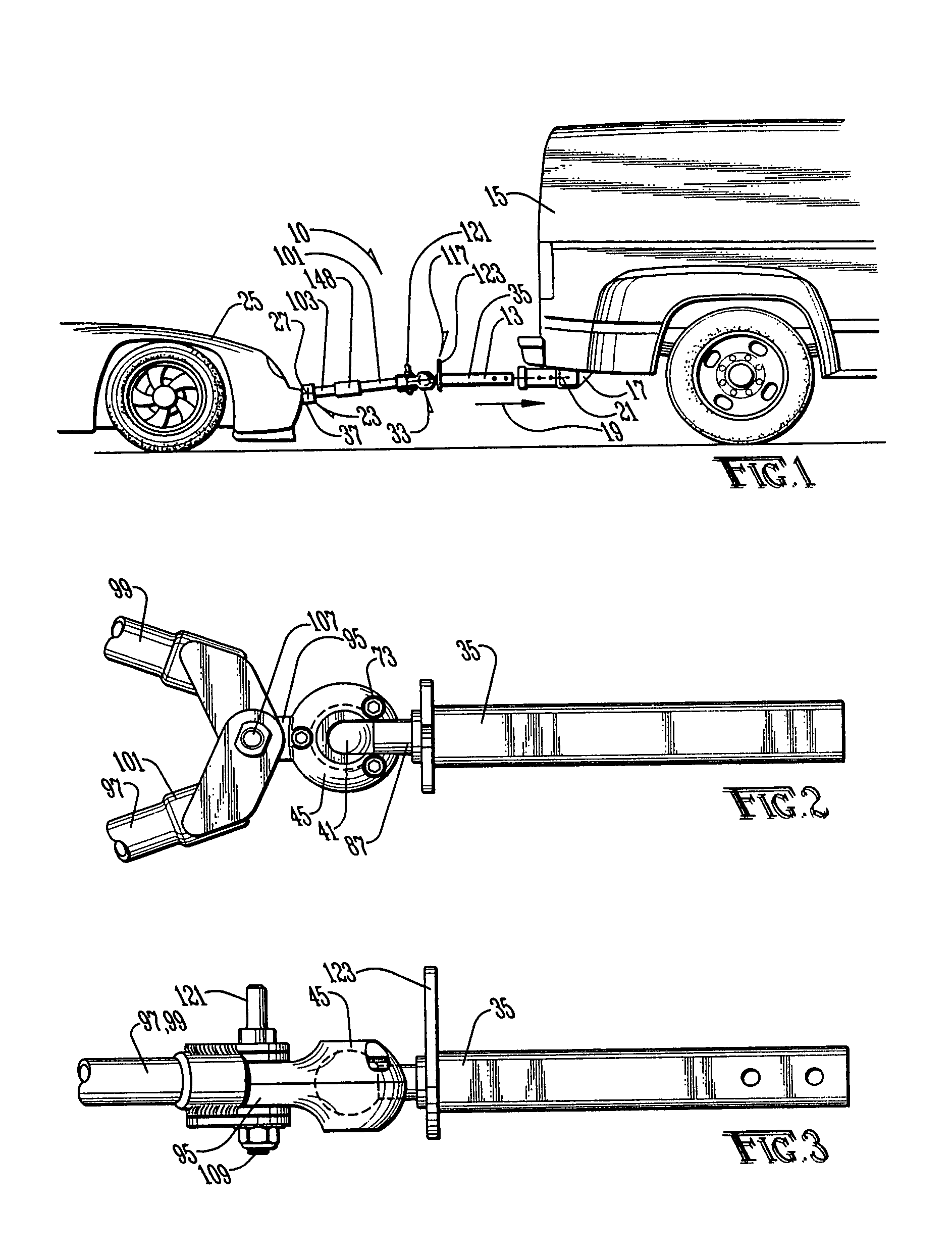Tow bar having a single moving part for operatively accommodating pitch and roll movements between a towing vehicle and a towed vehicle
a technology of tow bar and moving part, which is applied in the direction of towed devices, vehicle components, transportation and packaging, etc., can solve the problems of inconvenience, aggravating, and difficult task even for an experienced driver, and achieve the reduction of the number of moments created internally with the tow bar, the effect of reducing the number of different parts that may be subject to failure during use and reliable performan
- Summary
- Abstract
- Description
- Claims
- Application Information
AI Technical Summary
Benefits of technology
Problems solved by technology
Method used
Image
Examples
embodiment 10
[0071]In an application of embodiment 10 of the present invention, the hitching mechanism 35 is inserted and secured in the conventional receiver hitch 17 of the towing vehicle 15. If the tow bar 10 has been previously secured to the towing vehicle 15 and is in the stowed configuration 119, then the tow bar arms 97, 99 are grasped and maneuvered to disengage the latching mechanism 117, to rotate the body member 45 about the ball member 41 to thereby displace the towbar arms 97, 99 rearwardly toward the towed vehicle 25, and to secure the towed vehicle connection mechanism 23 to the towed vehicle 25. Of course, an application of the tow bar 10 would also involve the proper use of safety chains, electrical hookups, etc., as commonly known in the art.
[0072]Conversely, if the towed vehicle 25 is to be temporarily disconnected from the towing vehicle 15, the towed vehicle connection mechanism 23 is disconnected from the towed vehicle 25; the tow bar arms 97, 99 are used to rotate the bod...
embodiment 150
[0074]The modified embodiment 150 includes a towing vehicle connection mechanism 153 for connecting the tow bar 150 to a towing vehicle 15, the towing vehicle connection mechanism 153, upon insertion and securement in the conventional receiver hitch 17 of the towing vehicle 15 operatively defining a fore-to-aft towing vehicle axis 155 that is fixed relative to the towing vehicle 15 and to the towing vehicle connection mechanism 153; a towed vehicle connection mechanism 157 for connecting the tow bar 150 to the towed vehicle 25, the towed vehicle connection mechanism 157 operatively defining a horizontal transversely-oriented towed vehicle axis 159 that is fixed relative to the towed vehicle 25 and to the towed vehicle connection mechanism 157; and an interconnecting mechanism 161 connecting the towing vehicle connection mechanism 153 to the towed vehicle connection mechanism 157.
[0075]The modified embodiment 150 of the present invention includes a body member 163 having a first body...
PUM
 Login to View More
Login to View More Abstract
Description
Claims
Application Information
 Login to View More
Login to View More - R&D
- Intellectual Property
- Life Sciences
- Materials
- Tech Scout
- Unparalleled Data Quality
- Higher Quality Content
- 60% Fewer Hallucinations
Browse by: Latest US Patents, China's latest patents, Technical Efficacy Thesaurus, Application Domain, Technology Topic, Popular Technical Reports.
© 2025 PatSnap. All rights reserved.Legal|Privacy policy|Modern Slavery Act Transparency Statement|Sitemap|About US| Contact US: help@patsnap.com



